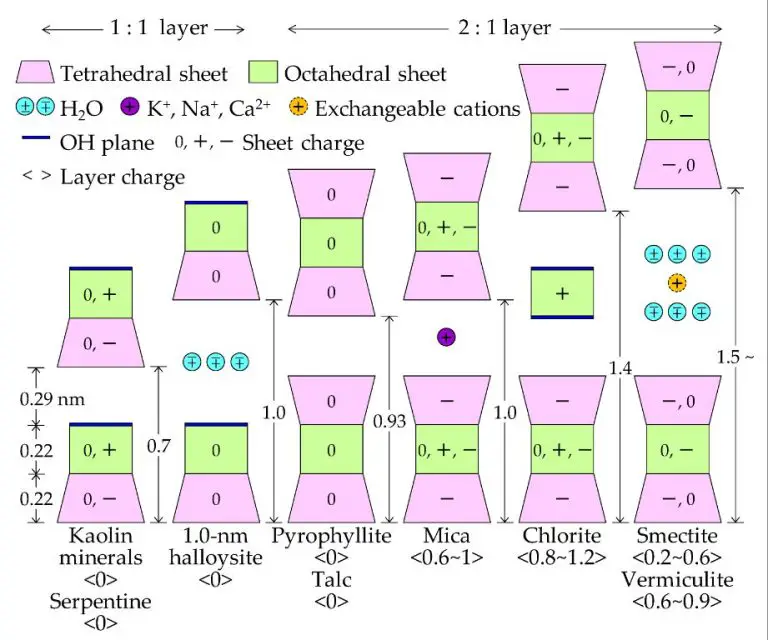Where Is Edible Clay Gotten From?
Edible clay, also known as geophagy, refers to clay that can be consumed safely by humans. It is typically consumed for health purposes or cultural traditions. Geophagy comes from the Greek words geo, meaning earth, and phagein, meaning to eat. Therefore, geophagy literally means “earth-eating.”
People have consumed clay for centuries, if not millennia, across many parts of the world. There are certain clays containing beneficial minerals like calcium and magnesium that provide health benefits when ingested. Consuming clay may also help absorb toxins and settle upset stomachs. Culturally, clay holds significance in various traditions and is consumed during pregnancy, religious ceremonies, coming-of-age rituals, and more.
The most common sources of edible clay are certain soils, termite mounds, rivers, lakes, and mountain quarries. Only certain types of clay are suitable for human consumption. The clay is harvested, dried, and processed into powder or blocks that can then be dissolved in liquids, sprinkled on food, or consumed directly.
Geophagy
Geophagy refers to the practice of eating earth, soil, or clay. This practice has occurred across cultures and continents throughout history. There are reports of geophagy on every inhabited continent and the practice has been documented as far back as the prehistoric era.
There are several reasons why people engage in geophagy. In some cultures, eating clay is part of a ritual or traditional healing practice. Pregnant women are one of the most common groups to practice geophagy, which is believed to help with nausea, heartburn, and provide essential nutrients. There is also evidence that geophagy helps protect against toxins and parasites by coating the intestines. The specific nutritional and detoxification properties depend on the mineral content of the clay that is consumed.
While geophagy is often stigmatized in Western cultures today, it continues to persist around the world. Understanding the cultural significance and perceived health benefits associated with the practice helps shed light on this unusual dietary behavior.
Locations
Clay deposits can be found all around the world. However, certain types of clay used for consumption are more abundant in specific regions. For example:
– White clay deposits are found extensively in Africa, including countries like Nigeria, Kenya, and Uganda. Consuming white clay called “calabash chalk” is a common practice in parts of West Africa.
– Deposits of gray and yellow clay are found widely across Asia, including China, India, and Japan. Eating these mineral-rich clays has a long history in traditional Chinese medicine and Ayurvedic practices.
– In South America, indigenous tribes in the central Amazon basin consume clay from exposed river banks. The Surma people in Ethiopia also eat blocks of clay from sources near the Omo River.
– In Europe and North America, high-quality food-grade clays are sourced from quarries and processing facilities to meet the modern demand for edible clay products.
Harvesting
Edible clay is typically harvested from deposits near the earth’s surface. In some locations, clay harvesting is done by hand, with pieces broken off exposed clay beds or harvested from pits dug into clay deposits. The clay is then left in the sun to dry and harden. Once dried, the clay is broken up and ground into a fine powder using stone tools or modern equipment. This powder can then be mixed with water to form an edible paste, or further processed into bricks, balls or other shapes.
In other areas, edible clay is mined from underground clay deposits. Industrial mining techniques may be used to excavate the clay, which is brought to the surface, dried and ground up. Processing facilities wash the clay to remove impurities and grind it into a uniform powder ready for consumption.
Some edible clay is harvested directly from the banks of certain rivers, where natural clay deposits occur. River bank clay is extracted manually then laid out to dry in the sun before being ground. This minimally processed river clay is eaten directly in some traditional cultures.
No matter the harvesting method, care is taken to ensure the clay does not become contaminated. Once prepared, the edible clay powder is packaged for commercial sale or given to community members for consumption.
Mineral Content
Clays contain a range of minerals that provide nutritional value. The specific mineral composition varies based on the geological source of the clay. Some of the key minerals found in edible clays include:
- Calcium – Important for bone health and muscle and nerve function.
- Magnesium – Plays a role in over 300 enzyme reactions in the body.
- Potassium – Crucial for heart health and proper fluid balance.
- Iron – Required for oxygen transport and energy metabolism.
- Zinc – Supports immune system function and wound healing.
- Copper – Necessary for iron absorption and red blood cell formation.
In addition to minerals, clays can provide other nutrients like silica and aluminum. However, high aluminum intake may pose health risks. The nutritional value of clays makes them attractive in some cultures, but they should not replace a balanced diet.
Health Effects
Clay has been consumed by humans for centuries, but there are potential health risks and benefits that need to be considered. On the positive side, clay can have nutritional benefits as a source of iron, calcium and copper. The negative surface charge of clay particles may also enable it to bind to some toxins and remove them from the body. However, clay also contains trace amounts of heavy metals like lead and arsenic which can accumulate over time. Excessive consumption has been linked to intestinal obstruction and nutritional deficiencies if people substitute clay for food. The risks seem highest for certain vulnerable populations like pregnant women, who could pass toxins on to the fetus. Overall, occasional small amounts are unlikely to cause harm in healthy individuals. But moderate to high levels of clay consumption may pose potential dangers, especially from contaminants. More research is needed to fully understand the health impact of this traditional practice.
Cultural Significance
The ingestion of clay has special cultural significance for many people around the world. For some, eating clay is an ancient tradition that has been practiced for generations. Clay is eaten as part of ceremonies, initiation rituals, and religious observances in various cultures.
In parts of Africa and the Americas, pregnant women are encouraged to consume clay to prevent morning sickness and provide minerals for the developing baby. New mothers also eat special ceremonial clays after giving birth. Clay is believed to help with nursing, boost immunity, and promote healing after childbirth in these cultures.
Certain clays are ascribed mystical powers by certain indigenous tribes in Africa and South America. These clays are used to make protective amulets thought to ward off evil spirits, cure diseases, and bring good fortune. Eating this clay is sometimes required to confer its protective powers.
Traditional medical practices in places like China and India incorporate edible clays into treatments for digestive issues, parasites, and toxins. Ayurvedic medicine considers certain clays to be balancing and cleansing for the body. Clays have also been eaten for health purposes throughout Europe for centuries.
For many cultures, the consumption of certain clays is strongly tied to ethnic identity and tradition. Passing down clay eating practices for spiritual, medicinal and cultural reasons is very important for preserving customs. While the reasons vary, clay holds deep meaning for numerous indigenous populations globally.
Consumption Methods
Clay is consumed in various ways around the world. Here are some of the common preparation and consumption methods:
Processed into Powder or Tablets
Some companies process natural clays into fine powders or compressed tablets for easier consumption. The clay undergoes cleaning and mechanical milling into a smooth powder before being sold as a supplement.
Mixed into Liquids
Many cultures mix edible clay into water, milk or other drinks. The clay powder can be dissolved into the liquid and drunk. Some people prefer this method as it makes the clay easier to ingest.
Added to Food
Clays like bentonite and kaolin are added while cooking or baking. For example, in Ghana, nzu is added to give soups and stews a thicker consistency. Some South American tribes add clay while brewing chicha – a fermented yucca-based drink.
Eaten Raw
In rural communities, raw clay is simply chewed and swallowed. Older geophagy practices involved consuming clay straight from the quarry. Though this poses a health risk today due to soil contaminants.
Applied Topically
Clays are applied topically as facial masks, pastes for skin conditions, or for detoxifying the skin through lymphatic drainage. High-quality clays suitable for cosmetic uses are specifically sourced.
Modern Uses
Edible clay has found renewed interest in recent years for its uses in natural medicine and contemporary cooking. Some modern applications include:
Natural Medicine
Clay is believed to help treat digestive issues, such as diarrhea, constipation, and indigestion. It may also help remove toxins and absorb bacteria from the gut. Some people take edible clay as a supplement to alleviate minor stomach ailments.
Skin Care
Cosmetic clays like kaolin are used in facial masks, soaps, and bath powders. They help cleanse and gently exfoliate the skin. The minerals in clays can also contribute benefits like reducing inflammation.
Cooking
Edible clays can add unique flavors and textures to food. Chefs are experimenting with clay in dishes like clay-coated fish, clay soups, and clay-infused cocktails. The clay’s earthy, mineral taste enhances the natural flavors of the food. Clay also gives a smooth, creamy texture.
As interest in foraging and local ingredients grows, edible clays present new possibilities for creative cuisine.
The Future
Edible clay has potential for expanded use and availability in the future. Some possibilities include:
-
Increased commercialization and distribution of edible clays internationally. Companies may seek to package and market select clays for consumption.
-
More standardized grading and labeling of edible clays based on mineral content. This could allow consumers to select specific clays tailored to their nutritional needs.
-
Use as a mineral supplement or ingredient in functional foods and beverages. Edible clays could be included in products like multivitamins or protein shakes.
-
Development of new clay-based food products. There is room for innovation around incorporating edible clays into foods and drinks, both for flavor and nutrition.
-
Medicinal applications. Some clays may hold promise for use in medicine, pending further research on health effects.
With increased interest in traditional practices, functional foods, and preventative health, edible clays are well-positioned to gain wider use and availability. Additional research and innovation may uncover further possibilities for these unique edible earths.



